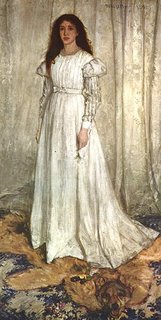A Departure from the Norm
When someone in Kathi’s women’s group, the Officers’ Wives of London (OWLs), proposed an evening out at a local London gentlemen’s club, Chuck’s eyebrows definitely went up. And some people even noted that there was an unusual twinkle in his eye. That is, until he got the details, and learned that the gentlemen’s club was actually the National Liberal Club. Now, anyone who knows Chuck must be able to envision that the unusual twinkle in his eye quickly vanished. However, being an avid history buff, he was keenly aware of the opportunity that was about to present itself. So he steeled himself, and armed with the company and moral support of four other couples, most of whom were friends, he agreed to attend for drinks and dinner.
The National Liberal Club was established by William Gladstone (Prime Minister 1868-1894) in 1882 for the purpose of providing club facilities for Liberal Party campaigners. The club's impressive neo-gothic building on the Thames Embankment is one of the largest clubhouses ever built, and was not completed until 1887. Its facilities include a dining room, a bar, function rooms, a billiards room, a smoking room and reading room, as well as an outdoor riverside terrace overlooking the London Eye. It is located close to both the Houses of Parliament and Trafalgar Square.
In its late nineteenth century heyday, its membership was primarily political, but had a strong journalistic and even bohemian character. Members were known to finish an evening's dining by diving into the Thames. Thankfully, after our delicious meals, the only sort of liquid refreshment that seemed to interest us was coffee.
In the early 1980s, the club sold off its second-floor bedrooms and the function rooms on the third floor and basement (including two vast ballrooms and the Gladstone Library) to create the adjoining Royal Horseguards Hotel, which is approached from a different entrance. The sale ensured that the club's financial future was secure, and the remaining part of the club, mainly on the ground and first floors of the vast building, remains one of the largest clubhouses in the world. Originally built for 6,000 members, it still provides facilities for around 2,000.
The club's recent restoration, an influx of newer members, a crowded social calendar, and the recent revival of the Liberal Democrats, have all contributed to once again making it one of London's more active clubs. Notable members have included Sir Winston Churchill and George Bernard Shaw.
The NLC is a members' club, with membership requiring nomination by an existing member, and a waiting period of several months. Members are either Political Members, who sign a declaration that they are a Liberal in their politics, or Non-Political Members, who sign a declaration that they shall not use the club's facilities for anything 'contrary to the cause of liberalism.' (Our host was a Non-Political Member.) A stringent dress code is still strictly enforced and gentlemen must wear a jacket and tie at all times, with female members maintaining a similar level of formality. While all of the gentlemen in our group conformed to the dress code by wearing a jacket and tie, one of them did sport his Republican Elephant tie. Chuck was sure it was a divine sign of forgiveness.
The National Liberal Club was established by William Gladstone (Prime Minister 1868-1894) in 1882 for the purpose of providing club facilities for Liberal Party campaigners. The club's impressive neo-gothic building on the Thames Embankment is one of the largest clubhouses ever built, and was not completed until 1887. Its facilities include a dining room, a bar, function rooms, a billiards room, a smoking room and reading room, as well as an outdoor riverside terrace overlooking the London Eye. It is located close to both the Houses of Parliament and Trafalgar Square.
In its late nineteenth century heyday, its membership was primarily political, but had a strong journalistic and even bohemian character. Members were known to finish an evening's dining by diving into the Thames. Thankfully, after our delicious meals, the only sort of liquid refreshment that seemed to interest us was coffee.
In the early 1980s, the club sold off its second-floor bedrooms and the function rooms on the third floor and basement (including two vast ballrooms and the Gladstone Library) to create the adjoining Royal Horseguards Hotel, which is approached from a different entrance. The sale ensured that the club's financial future was secure, and the remaining part of the club, mainly on the ground and first floors of the vast building, remains one of the largest clubhouses in the world. Originally built for 6,000 members, it still provides facilities for around 2,000.
The club's recent restoration, an influx of newer members, a crowded social calendar, and the recent revival of the Liberal Democrats, have all contributed to once again making it one of London's more active clubs. Notable members have included Sir Winston Churchill and George Bernard Shaw.
The NLC is a members' club, with membership requiring nomination by an existing member, and a waiting period of several months. Members are either Political Members, who sign a declaration that they are a Liberal in their politics, or Non-Political Members, who sign a declaration that they shall not use the club's facilities for anything 'contrary to the cause of liberalism.' (Our host was a Non-Political Member.) A stringent dress code is still strictly enforced and gentlemen must wear a jacket and tie at all times, with female members maintaining a similar level of formality. While all of the gentlemen in our group conformed to the dress code by wearing a jacket and tie, one of them did sport his Republican Elephant tie. Chuck was sure it was a divine sign of forgiveness.






